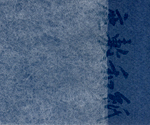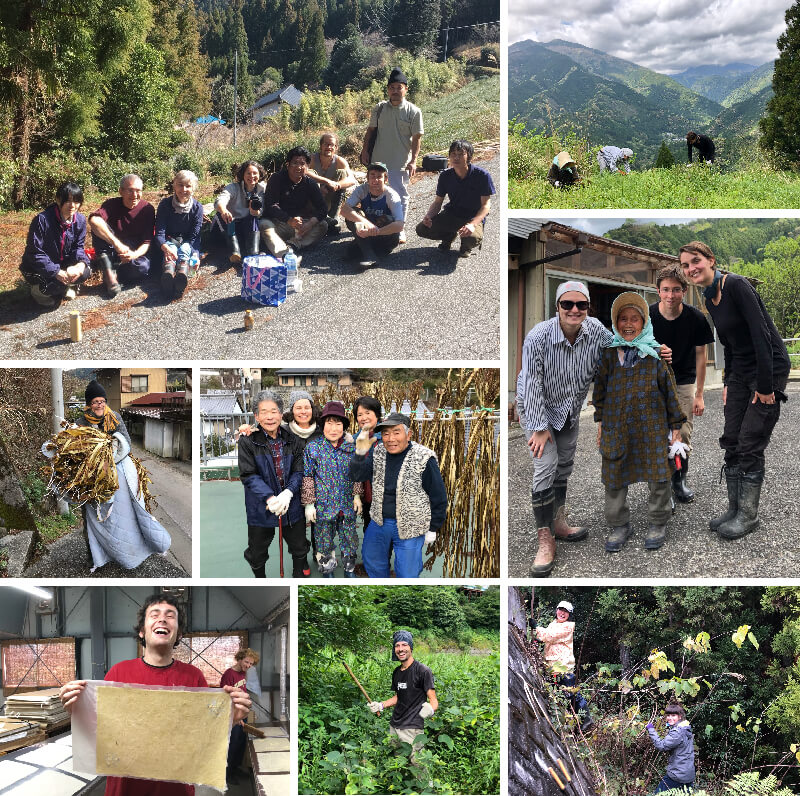 Origin of company name “Kashiki”
Origin of company name “Kashiki”
土佐和紙の起源は、平安時代に編纂された延喜式献上品(えんぎしきけんじょうひん)として奉書、杉原紙(すぎはらがみ)等を献納したことに遡ります。
地名であり、弊社の屋号である「鹿敷」は、神谷(こうのたに)地域(現・いの町の南西部)にある「延喜式神社」へ食物を備える村だったので、「炊(カシキ)」が転じて「鹿敷」となったといわれています。
During the Heian period, Hosho (a high quality Japanese paper) named Sugihara-gami were offered to the Imperial court as Engi-Shiki Kenjohin (offering). This was the origin of Tosa washi.
Our company name, “Kashiki” is derived from the local town name in Konotani (south west area of Ino town). In the ancient times, Konotani was assigned to offer food to Engi-Shiki shrine. Soon after, people started to call this area “Kashiki” which also means “to cook”.
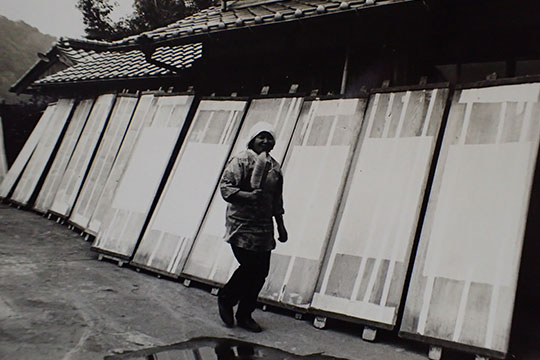
 With 200 years of history
With 200 years of history
土佐和紙は、江戸時代になると土佐和紙中興の祖 安芸三郎左衛門により「土佐七色紙」が幕府指定の献上品として藩の保護を受け、土佐の主要な特産品として高く評価されるようになりました。
紙漉としての濵田家を遡ると現代表取締役の7代前は濵田武平(1810年~1884年)で、筆字で「漉工武平」と書いた木札を持っており、その親もまた紙漉きでした。
During the Edo period, the local clan designated “Tosa Nanairo-gami (seven colored Tosa papers)”, that was developed by AKI Saburouzaemon who is father of Tosa Washi as an official offering to the shogunate. Since then, the clan protected Tosa washi industry and the product became highly regarded as a major specialty of Tosa.
The history of the Hamada family as paper makers begun with HAMADA Buhei (1810~1884) seven generations ago, whose parents were also paper makers. This is known through a calligraphy writing on a wooden tag saying “Sukiku Buhei“ (Paper maker Buhei).
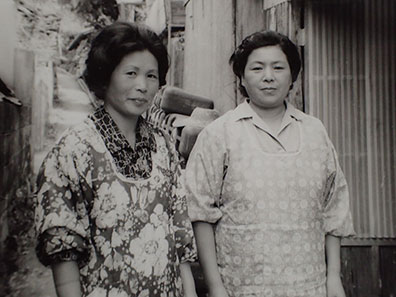
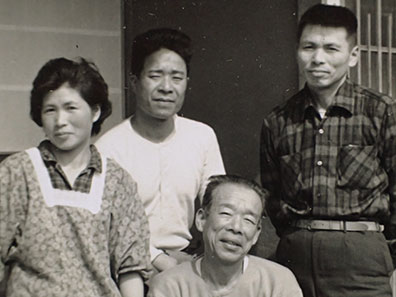
鹿敷製紙の2代目である繁信の妻、淑子の実家である尾﨑家も、県下に24軒あった「御用紙漉」の一軒です。淑子が14歳の時94歳で亡くなった曽祖父から「16歳の時初めて庄屋さんに連れられ、お城に上がった」という話を聞いたそうです。尾﨑家には「殿様から頂いた盃」が代々伝わっています。
The second representative HAMADA Shigenobu’s wife, Toshiko, was from a papermaking family as well. Her family, the Ozaki family, was one of the twenty-four families in Kochi prefecture to produce special paper for the shogunate. When Toshiko was 14 years old her great grandfather, who passed away at the age of 94, shared a story about his visit to the castle with the village headman when he was 16 years old. He received a sakazuki (sake cup) from the lord and Ozaki family has kept and handed the sakazuki down from generation to generation.
武平が元服の頃、「土佐紙業会の恩人」と言われる吉井源太が誕生します。吉井源太は、製紙用具の改良により、紙の量産、タイプライター用紙や謄写紙の開発によって、紙業界の発展に寄与しました。
YOSHII Genta who is said to be the benefactor of Tosa paper industry was born around the time when Buhei became 14 years old. Genta improved papermaking tools which led to the mass production of paper. He also invented typewriter papers and carbon papers which greatly contributed to the development of paper industry.
 Together with the community and nature
Together with the community and nature
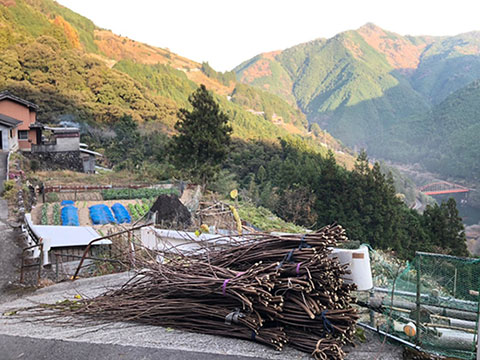

平地の少ない弊社の地区では、昭和30年代頃まで多くの家々では仁淀川で鮎漁をしたり、山の急斜面で僅かばかりの農地を耕し、牛を飼い、あるいは蚕を飼い、その傍で紙を漉き、生計を立てていました。
Our company is located in an area with very few flatland. Until the mid 60‘s, local residents made their living by fishing at Niyodo river, by cultivating small amounts of farmland on steep slopes in the mountains, by keeping cows and/or silk moths and by producing paper.
戦時中、神谷村の村長であった濵田政美は、長男の繁信を含め多くの村民を中国・満州へ送り出していました。満州から帰国した者たちの仕事の受け皿になればと「丸三」という会社を立ち上げました。
そして五年後の昭和25年、鹿敷製紙株式会社としての歩みを始めました。
HAMADA Masami was the village mayor during the Second World War and his son Shigenobu and other village men were sent to Manchuria (China) as troops. With high hopes that the village men can start working again once returning from Manchuria, Masami established a company named “Marusan”.
Five years later in 1950, Kashiki Paper Co.,Ltd was established and began its operation.




